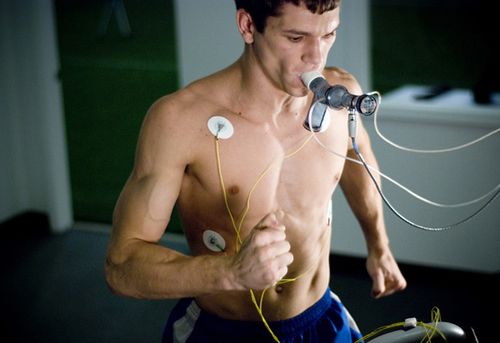Today I want to address one of the most important aspects of recovery: quality sleep. Here’s a question I recently received from a reader.
Question: Hi Chad, I purchased your HFT program and I’m wondering if I should modify the workouts to take into account high stress and poor periods of sleep? I have a stressful job and two young toddlers so sleep is often less than perfect on a weekly basis. Thanks, Matt
Answer: Matt, I feel your pain. I’m not someone who functions well on less than eight hours of sleep, and I rarely reach that coveted goal these days. Oftentimes my athletes can’t get a full eight hours due to travel and schedule demands, so I had to find a way to make the most of their sleep time.
The key is to maximize however much sleep you can get. Six hours of high-quality, restful sleep is more beneficial than eight hours spent tossing and turning.
So before I answer your original question about manipulating the HFT workouts to meet your sleep insufficiency, I want to outline my three top tips for improving the quality of your sleep.
1. Take Vitamin C and magnesium before bed: Magnesium is a powerful mineral that helps relax the central nervous system, and Vitamin C lowers cortisol. The combined effect helps you quickly feel drowsy, and then it helps you remain asleep.
The best concoction I’ve found for improving sleep quality is with a combination of Vitamin C and magnesium. But just any old Vitamin C/magnesium combo won’t work since neither nutrient is easy for the body to assimilate in regular supplement form. You need a high-quality version of each nutrient to get the job done.
My clients and I use Lypospheric Vitamin C and Mineralife Magnesium 15 minutes before bed. Mix the two nutrients in a few ounces of water and shoot it down like a shot of tequila. It tastes terrible so don’t let it sit in your mouth.
2. Sleep in a cool room: Research demonstrates that the optimal room temperature for sleep is between 60-68 degrees Fahrenheit. This temperature range lowers your core body temperature which helps you feel sleepier. It’s important to lower your temperature because an elevated core temperature is one physiological mechanism associated with the wake cycle. People with insomnia typically have a higher pre-bedtime core temperature.
3. Sleep in a pitch black room: The tiniest bit of light can have a negative effect on your sleep quality by reducing melatonin. There’s a small region of your brain within the hypothalamus called the suprachiasmatic nucleus (SCN) that controls all aspects related to the sleep/wake cycle, including melatonin production.
When your body senses light, the SCN turns on physiological processes related to the wake cycle: it stops melatonin production, and increases cortisol and core body temperature. Since those three factors are related to the wake cycle, you obviously want to minimize them by keeping your bedroom pitch black.
Now, back to the original question: Should you manipulate the HFT parameters when you can’t get adequate sleep?
Yes, and this applies to any training program you’re on. When you feel rundown, you should decrease the intensity of all the sets. This could mean either lowering the training loads by 20-30% or stopping each body weight exercise an extra rep or two sooner than normal.
In extreme cases, it never hurts to take an extra day off. But in most instances, just going through the motions will actually help you sleep better that night since there’s a strong, positive correlation between exercise and sleep quality. This is true even when your workouts aren’t up to par.
And speaking of HFT, I recently did a 45-minute interview with Dr. Lonnie Lowery’s Iron Radio podcast where I discuss the mechanisms, observations, and science behind my HFT protocols.
You can listen to my interview at Iron Radio.
Stay Focused,
CW


